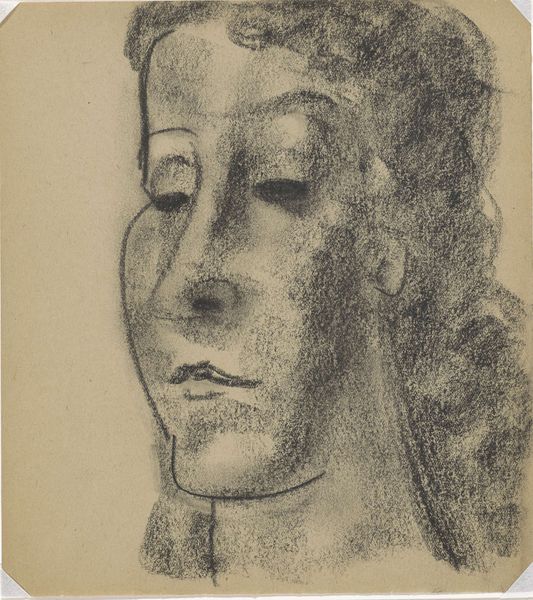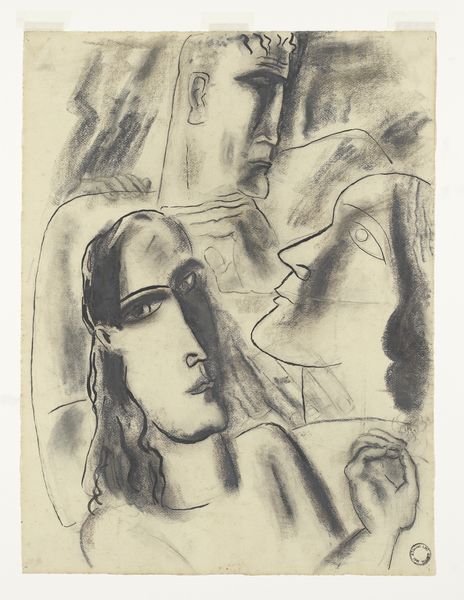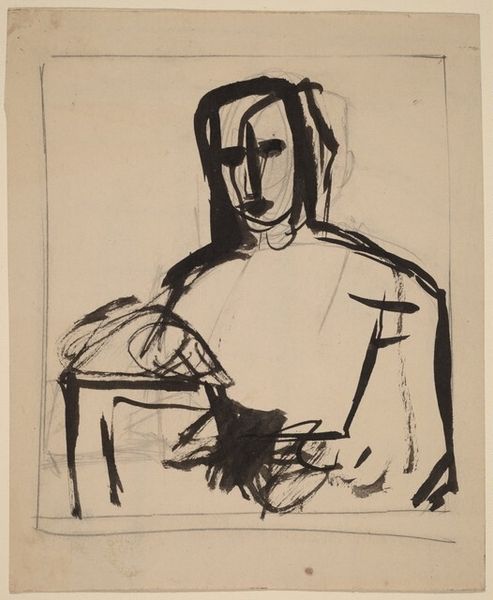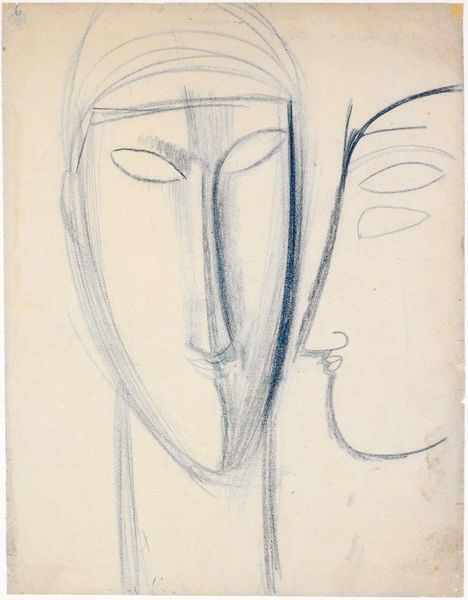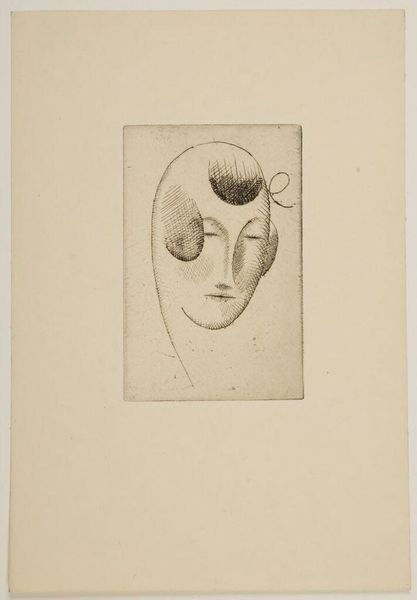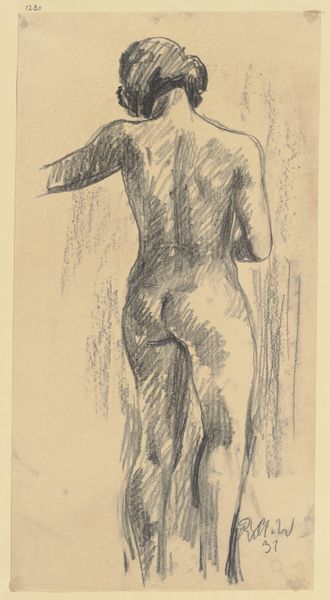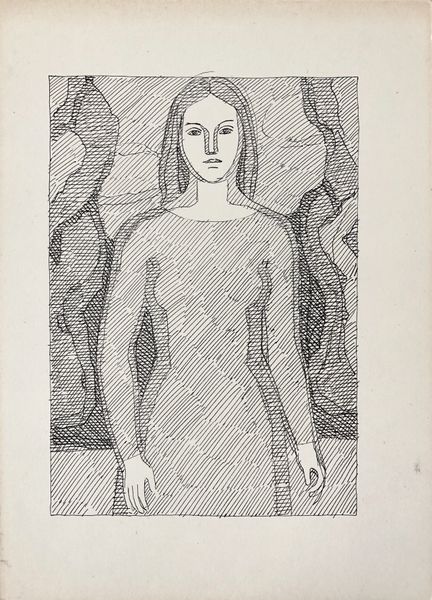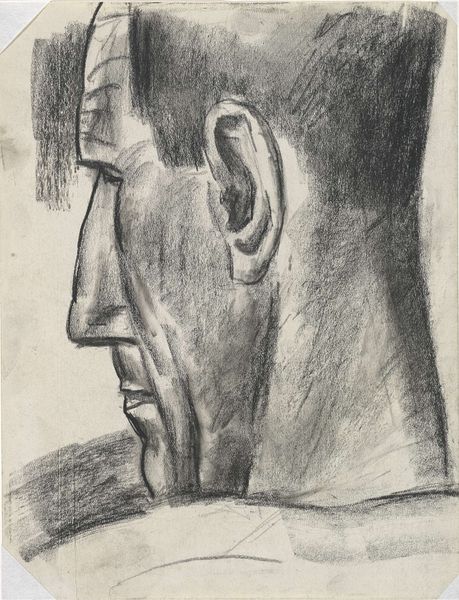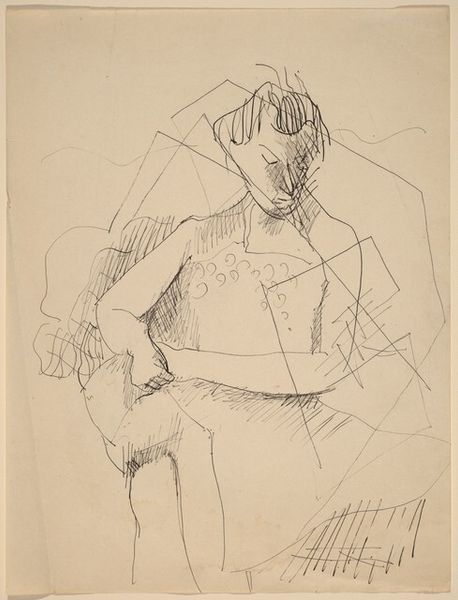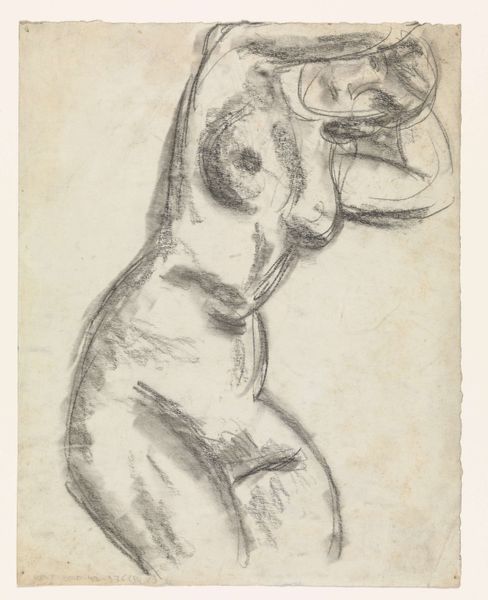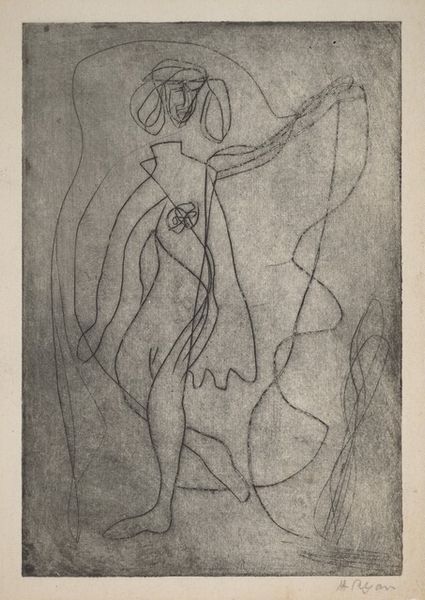
drawing, pencil
#
portrait
#
pencil drawn
#
drawing
#
figuration
#
pencil drawing
#
pencil
#
expressionism
#
portrait drawing
Dimensions: height 206 mm, width 180 mm
Copyright: Rijks Museum: Open Domain
Curator: Let's consider this intense drawing, "Mannenhoofd," attributed to Leo Gestel and dated between 1891 and 1941. What’s your initial take? Editor: Stark. It looks almost like a study for a monument. Very rough, you can see the build up of the pencil in the dark areas around the face. The limited use of line makes it very evocative and ghostly. Curator: The portrait embodies aspects of Expressionism, placing it in a lineage of artists grappling with psychological intensity and social upheaval. Considering its ambiguous dating, what narratives might this portrait speak to in terms of gender and identity? It appears very masculine, almost an attempt at brutal honesty or social commentary perhaps? Editor: I am fascinated by its materiality – the immediate impression is the rough tooth of the paper against the softness of the pencil strokes. You see where the artist reworked the shadows. It's quite visceral to observe that. I would love to know where this paper came from. Was it handmade or mass-produced? Curator: An interesting material question to pose when evaluating production practices within Expressionism! Gestel and his contemporaries often utilized readily available materials to comment on class disparity and modes of rapid production that arose as a direct result of the burgeoning Industrial Revolution. And it does challenge any romanticized ideas that only high quality materials were used for "high art". The portrait aesthetic may further question or push against accepted forms of identity within these changing times. Editor: Yes, the medium amplifies its message. This raw immediacy invites us to consider the very hands that made this portrait. Gestel is manipulating the tools and, as such, is in a relationship with labor in a unique way, one where art-making challenges accepted practices. Curator: Precisely. This intersection illuminates the dialogue between form and political statement that Gestel seemed intent on engaging. It presents viewers with both intimacy and historical perspective that moves past traditional representations of "the male". Editor: This approach highlights the means of art making. Instead of seeing it as precious, we look closely at its construction and context. I feel I understand not only Gestel better but the value we give artistic endeavors today. Curator: Absolutely. Through material consideration alongside historical and cultural readings, "Mannenhoofd" resonates beyond a single image. It's really representative of a time period—an amalgamation of events happening from within a person.
Comments
No comments
Be the first to comment and join the conversation on the ultimate creative platform.
